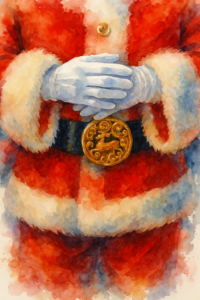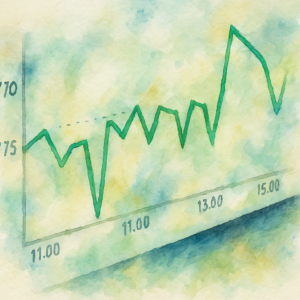Dive into this clip of fast spoken French in real life. With all the starts, stops, and laughter that comes with it. Can you pick up: “sa main sur la mienne”, “j’étais amoureux de toi”, and “le jour où” in the clip? Hear it all and fill in the blanks as you listen, perfect for…
Take the quiz, join the conversation.
Did you find this one challenging or easy? Did you hear something diffferent? What surprised you? What levels did you complete? Comment below and share what’s opening up for you with this quiz.
Learn French with a podcast snippet! This clip is is from Transfert s01ep22. We do not own the content. Listen to the entire episode here.
The above audio sample and transcription is from Transfert s01ep22. We do not own the content. Listen to the entire episode here.
his hand on mine
What’s opening up for you with this clip?
The snippet in English
Find a translation of this snippet here, how much of this did you hear?
Et à la fin du rendez-vous, il met sa main sur la mienne et il me dit euh « Mais je ne peux pas travailler avec toi, j’étais amoureux de toi depuis le jour où je t’ai rencontré. » Et donc, euh on a pris l’ascenseur et notre histoire a commencé.
And at the end of the date, he puts his hand on mine and says uh “But I can’t work with you, I’ve been in love with you since the day I met you.” And so, uh, we got in the elevator and our story began.
The above translation from Deepl
What does “il met sa main sur la mienne” mean?
The phrase “il met sa main sur la mienne” translates to “he puts his hand on mine” in English. It describes a physical gesture where one person places their hand over another person’s hand.
- Physical Contact: This is a physical action where a person extends their hand and places it over someone else’s hand, resulting in the two hands touching.
- Contextual Interpretations: The meaning behind this gesture can vary widely depending on the context and the relationship between the two individuals. It could be a sign of comfort, support, affection, reassurance, or intimacy.
Usage in a Sentence:
- “Lorsque j’étais nerveuse, il a mis sa main sur la mienne pour me rassurer.” (When I was nervous, he put his hand on mine to reassure me.)
- “En signe d’amitié, il met sa main sur la mienne.” (As a sign of friendship, he puts his hand on mine.)
Cultural Significance:
In many cultures, including French culture, this gesture is generally seen as a comforting one. It can convey warmth and solidarity. In romantic contexts, it can be an intimate gesture, while in platonic ones, it might simply mean reassurance or companionship.
Variations in Use:
While the phrase describes the action itself, the implications can be different based on the setting:
- Romantic Context: Can imply tenderness or a desire for a closer connection.
- Friendly Context: A sign of support or to convey “I’m here for you.”
- Consoling Context: Offering comfort in a difficult moment.
In Summary: “Il met sa main sur la mienne” literally means “he puts his hand on mine,” describing a physical act of one person’s hand resting on another’s. It’s a versatile gesture that can express comfort, support, or affection, and its interpretation depends largely on the context and the nature of the relationship.
What does “j’étais amoureux de toi” mean?
The phrase “j’étais amoureux de toi” translates to “I was in love with you” in English. It is a declaration of past affection and emotional attachment towards someone.
Usage and Nuance:
- This statement is in the imperfect tense in French, which is used to describe ongoing or habitual past actions or states. It implies that the feeling of love was continuous over a period of time in the past.
- It’s a personal and emotionally charged statement, often reflecting a sense of nostalgia or regret when looking back on a past relationship.
Examples:
- “Quand nous étions ensemble, j’étais amoureux de toi.” (When we were together, I was in love with you.)
- “J’étais amoureux de toi, mais les choses ont changé.” (I was in love with you, but things have changed.)
Cultural Context:
In French culture, as in many others, openly discussing feelings of love reflects depth and sincerity. Such an admission is not taken lightly and is typically reserved for more serious emotional revelations.
Related Phrases:
- “Je t’aime” (I love you) – present tense, indicating current feelings.
- “Je suis tombé amoureux de toi” (I fell in love with you) – past tense, indicating the beginning of the feelings.
- “Je ne suis plus amoureux de toi” (I am no longer in love with you) – used to indicate that the feelings have ended.
When to Use:
One might use “j’étais amoureux de toi” to reflect on past relationships or to express feelings that were once strong but may no longer be present.
In Summary: “J’étais amoureux de toi” means “I was in love with you,” expressing a past state of being in love. It’s a deeply personal statement that communicates enduring feelings that were experienced in the past. This phrase is significant in conversations about past relationships and the feelings associated with them.
What does “le jour où” mean?
The phrase “le jour où” translates to “the day that” or “the day when” in English. It is used to refer to a specific day when an event took place.
Usage and Nuance:
“Le jour où” introduces a particular moment in time that is significant to the speaker. It can be used in both positive and reflective contexts, often highlighting a turning point or a memorable event in the speaker’s life.
Examples:
- “Le jour où je t’ai rencontré, ma vie a changé.” (The day I met you, my life changed.)
- “Le jour où il a plu pour la première fois en été, j’étais surpris.” (The day it rained for the first time in summer, I was surprised.)
“Où” and “quand” in French both relate to time, but they are used in different contexts.
“Où”
- Meaning: “Où” literally means “where” in English, but when used with expressions of time like “le jour où,” it means “the day when/on which.”
- Usage: It is used to refer to a specific occasion or a particular point in time. “Où” is more precise in pointing out a single event in time or a location in space.
“Quand”
- Meaning: “Quand” translates to “when.”
- Usage: It is generally used to talk about time in a more general sense. It can refer to a recurring event or ask a question about time.
Examples with “Où”:
- “Le jour où je t’ai rencontré” (The day when I met you) – Refers to a specific day.
- “L’endroit où je suis né” (The place where I was born) – Refers to a specific place.
Examples with “Quand”:
- “Quand je te rencontre, je suis heureux” (When I meet you, I am happy) – Can refer to every time the speaker meets the person.
- “Quand es-tu né?” (When were you born?) – Asks for a specific point in time but is open-ended.
In Summary: “Le jour où” means “the day when” and is used to pinpoint a significant event in the past. In the phrase “le jour où je t’ai rencontré,” it is reminiscent of the specific and impactful day when the speaker met someone, indicating that the encounter was meaningful.
What is opening up for you?
Comment below with the words you thought you heard, where you struggled, where you surprised yourself, or what you thought about this clip. Every little bit inspires other learners, thank you for being that inspiration to others on their French fluency journey!
Dive into this clip of fast spoken French in real life. With all the starts, stops, and laughter that comes with it. Can you pick up: “sa main sur la mienne”, “j’étais amoureux de toi”, and “le jour où” in the clip? Hear it all and fill in the blanks as you listen, perfect for…
Take the quiz, join the conversation.
Did you find this one challenging or easy? Did you hear something diffferent? What surprised you? What levels did you complete? Comment below and share what’s opening up for you with this quiz.








